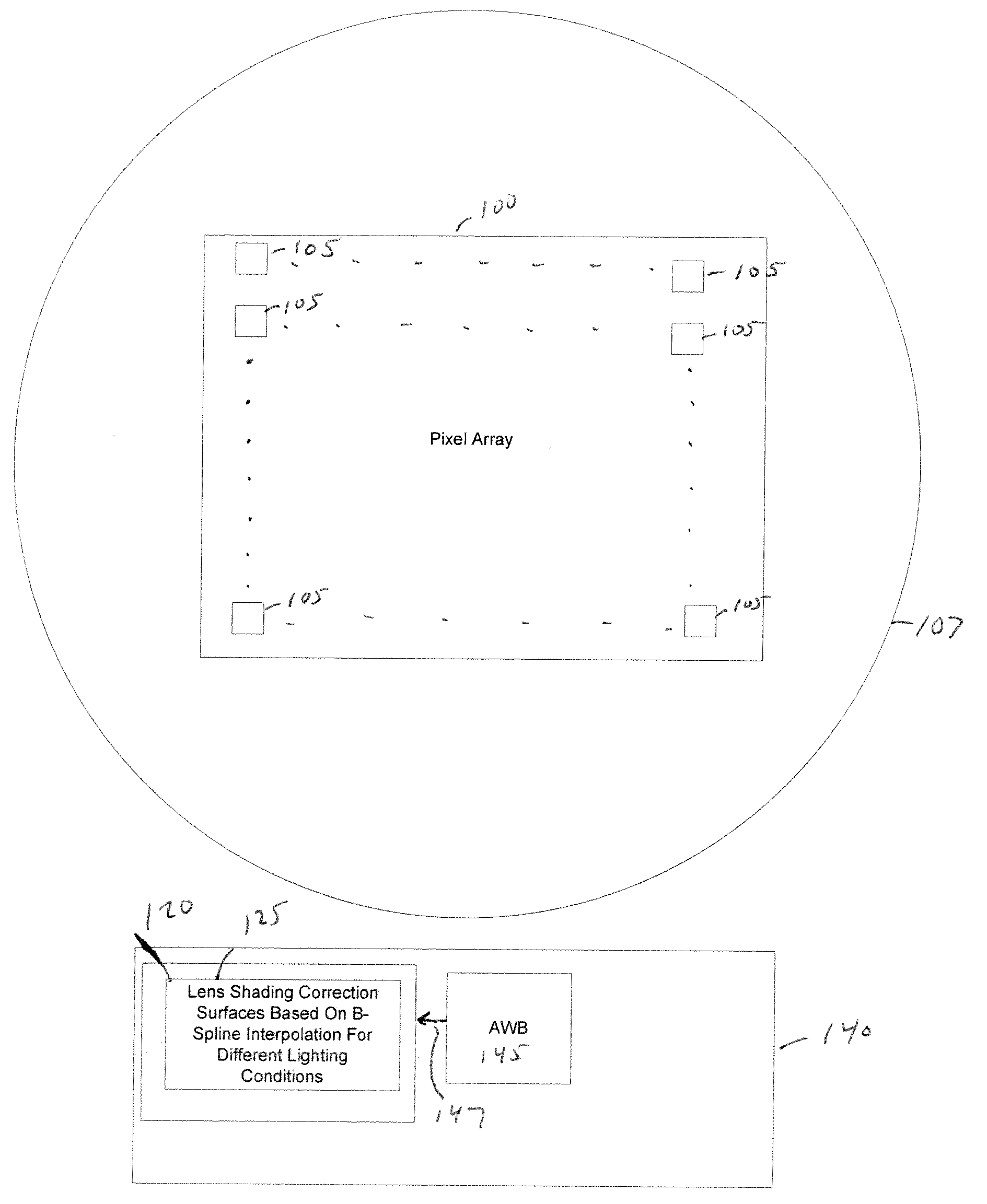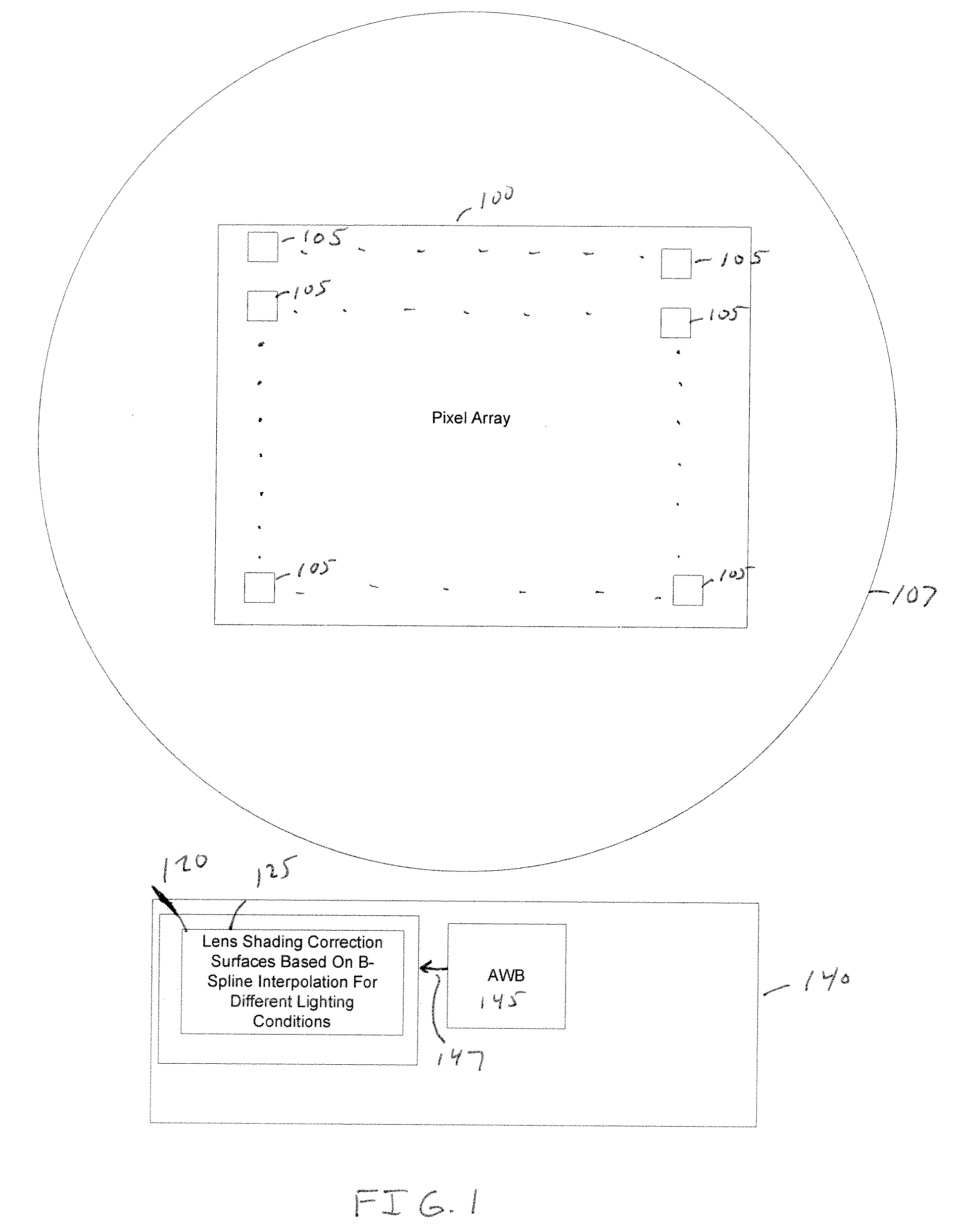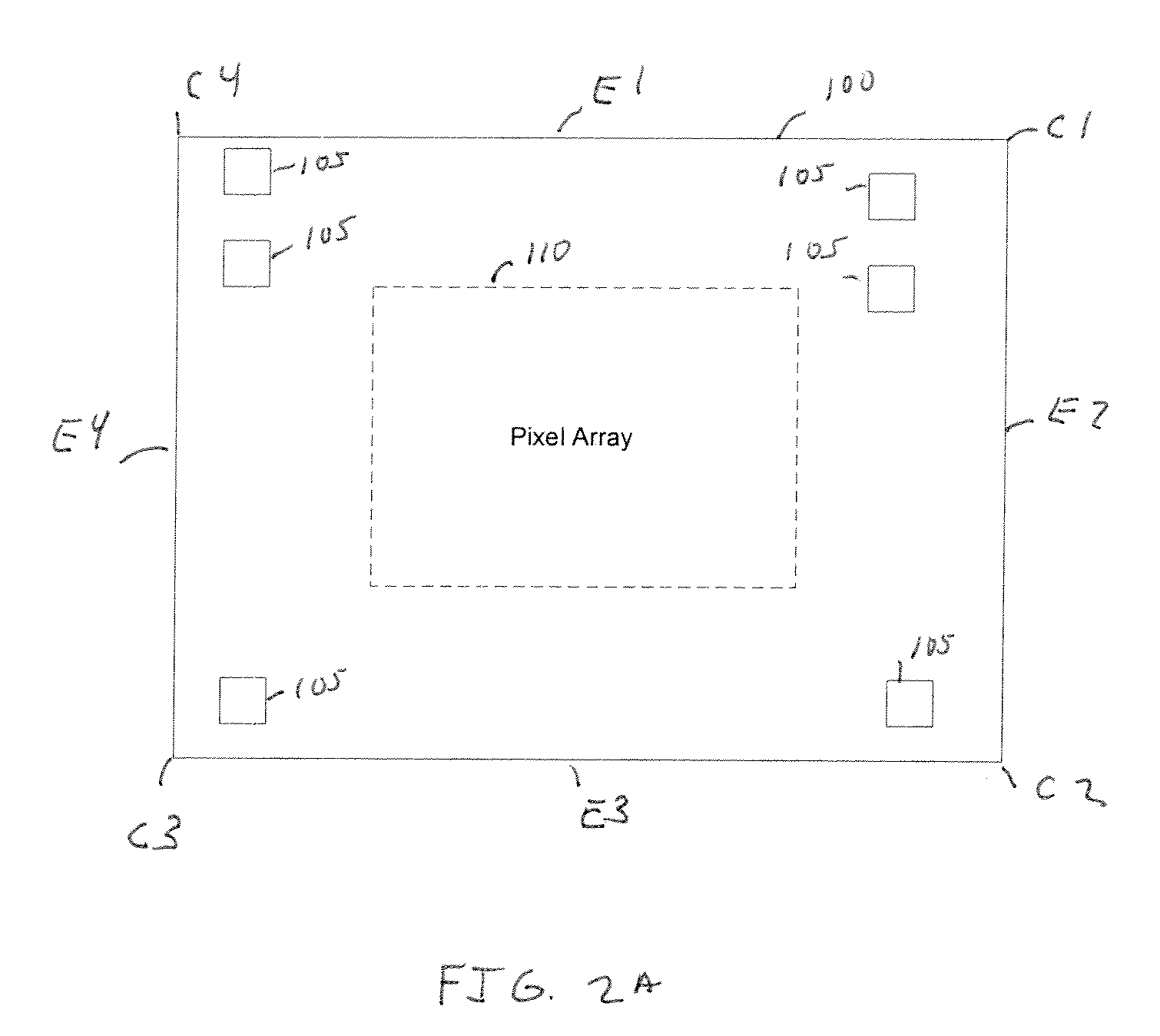System and Method For Lens Shading Correction Of An Image Sensor Using Splines
a technology of image sensor and lens, applied in the field of lens shading correction of image sensor, can solve the problems of difficulty in uniformly projecting an image, lens shading correction, and asymmetric shading effects, and achieve the effect of accurate shading correction
- Summary
- Abstract
- Description
- Claims
- Application Information
AI Technical Summary
Benefits of technology
Problems solved by technology
Method used
Image
Examples
Embodiment Construction
[0018]FIG. 1 is a block diagram illustrating an image sensing system having an image sensor 100 with an array of photo-sensitive pixels 105. The photo-sensitive pixels are arranged in rows (in an x-dimension) and columns (in a y-dimension). As an illustrative example image sensor 100 may be implemented as a complementary metal oxide semiconductor (CMOS) image sensor. An image processor 140 receives captured images from image sensor 100 and processes the captured images.
[0019]In a packaged optical module, light is focused onto each pixel 105 of image sensor 100 via optical components such as a lens 107 (illustrated as a circle for illustrative purposes). However, more generally a packaged optical module may also include other optical components known in the art, such as a color filter array (CFA) micro-lens array to direct light to each pixel and also define different pixel colors. The combined optical response of all optical components in the packaged optical module results in a len...
PUM
 Login to View More
Login to View More Abstract
Description
Claims
Application Information
 Login to View More
Login to View More - R&D
- Intellectual Property
- Life Sciences
- Materials
- Tech Scout
- Unparalleled Data Quality
- Higher Quality Content
- 60% Fewer Hallucinations
Browse by: Latest US Patents, China's latest patents, Technical Efficacy Thesaurus, Application Domain, Technology Topic, Popular Technical Reports.
© 2025 PatSnap. All rights reserved.Legal|Privacy policy|Modern Slavery Act Transparency Statement|Sitemap|About US| Contact US: help@patsnap.com



